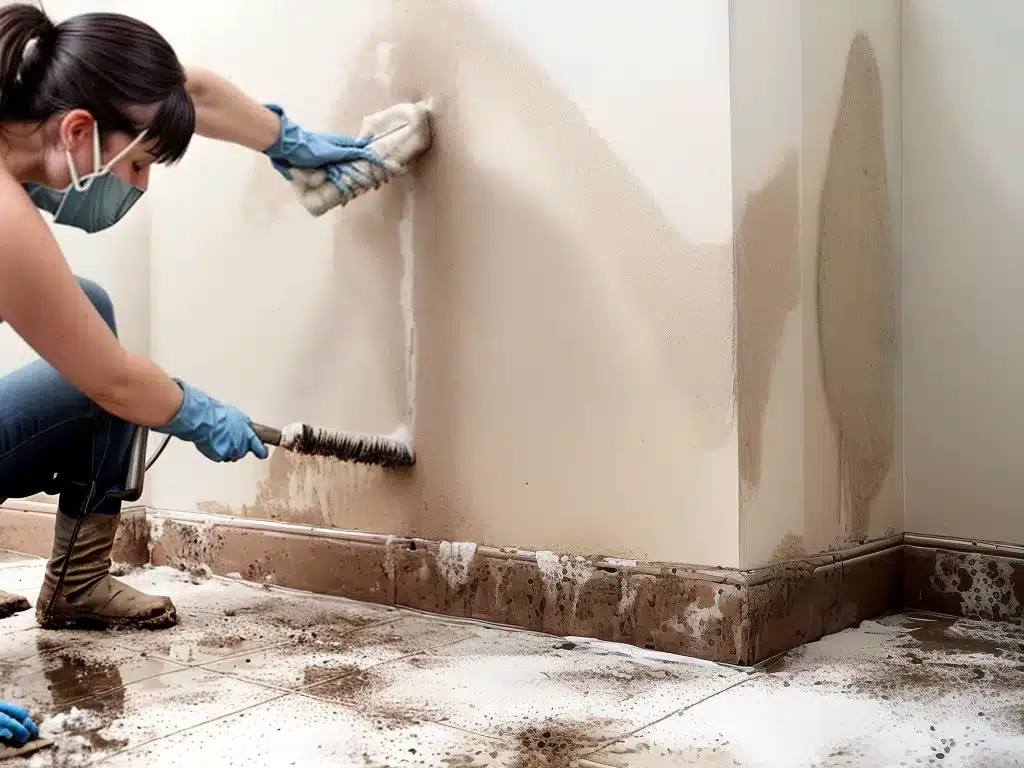Mold can grow almost anywhere there is moisture. While small amounts of mold are not necessarily hazardous, inhaling or touching mold spores can cause allergic reactions. Mold also damages whatever it grows on. Instead of using harsh chemicals like bleach to remove mold, there are several effective natural methods to remove it safely.
Why Avoid Bleach and Chemicals for Mold Removal
Bleach and chemical mold removers may seem like quick and easy solutions, but they come with drawbacks:
-
Toxic fumes – Bleach and chemicals release fumes that can irritate eyes, skin, and lungs. The fumes are especially dangerous in small, enclosed spaces.
-
Damage to materials – Bleach can discolor, corrode, and weaken surfaces it comes into contact with. Using too much bleach causes pitting and etching.
-
Doesn’t kill mold roots – Bleach only removes surface mold. The roots can remain in porous materials like wood and drywall and regrow.
-
Harmful runoff – Chemicals wash down drains and contaminate groundwater and waterways.
The risks of bleach and chemicals outweigh the benefits for mold removal. Safer methods effectively remove mold without endangering health or the environment.
Effective Natural Mold Removal Methods
Natural methods provide safe, non-toxic ways to remove mold. They are affordable and utilize common household items.
Baking Soda
Baking soda is a mild abrasive that cleans and deodorizes. Its antifungal properties help inhibit mold growth.
- Make a paste with water and apply to moldy areas. Let sit for 15 minutes.
- Scrub with a stiff brush or sponge to remove stains.
- Allow surface to dry completely to prevent remolding.
Baking soda paste works on surfaces like bathroom tiles, grout, sinks, showers, and tubs.
White Vinegar
White vinegar kills 82% of mold species. Its high acidity breaks down mold and bacteria cells.
- Spray or wipe undiluted vinegar onto moldy areas.
- Let sit for 1 hour before rinsing and drying the area thoroughly.
- Repeat weekly to inhibit regrowth.
Use vinegar on hard surfaces like floors, windows, shower curtains, and countertops. Test on a small area first, as vinegar may etch grout.
Tea Tree Oil
Tea tree oil is a natural antifungal and antimicrobial. Add it to other cleaners for added mold-fighting power.
- Add 20 drops tea tree oil to 2 cups water in a spray bottle. Shake well before each use.
- Lightly spray on moldy areas until completely covered. Let sit for at least 2 hours.
- Wipe with a clean, dry cloth. Repeat as needed.
Tea tree oil spray helps remove mold from drywall, tile, tub surrounds, shower curtains, furniture, and other surfaces. Use in well-ventilated areas.
Hydrogen Peroxide
Hydrogen peroxide breaks down mold cell walls on contact. At higher concentrations, it prevents regrowth.
- Use 3% hydrogen peroxide solution undiluted.
- Spray or wipe onto moldy surfaces. Let bubble for 10 minutes.
- Scrub with a stiff nylon brush and rinse thoroughly.
Hydrogen peroxide works well on sinks, countertops, shower curtains, tile and grout. Avoid using it on wood furniture.
Prevent Mold Growth
To avoid mold recurring after removal, tackle the source of the moisture problem. Here are some prevention tips:
- Fix leaks and dry out damp areas as soon as possible.
- Increase ventilation and air circulation.
- Use dehumidifiers to maintain indoor humidity below 50%.
- Clean bathrooms regularly with natural antifungals like vinegar.
- Use mold-resistant paints when painting damp areas.
With non-toxic methods, a little diligence goes a long way in keeping mold out of your home. Skip the bleach and chemicals – your family and home will be healthier for it.







